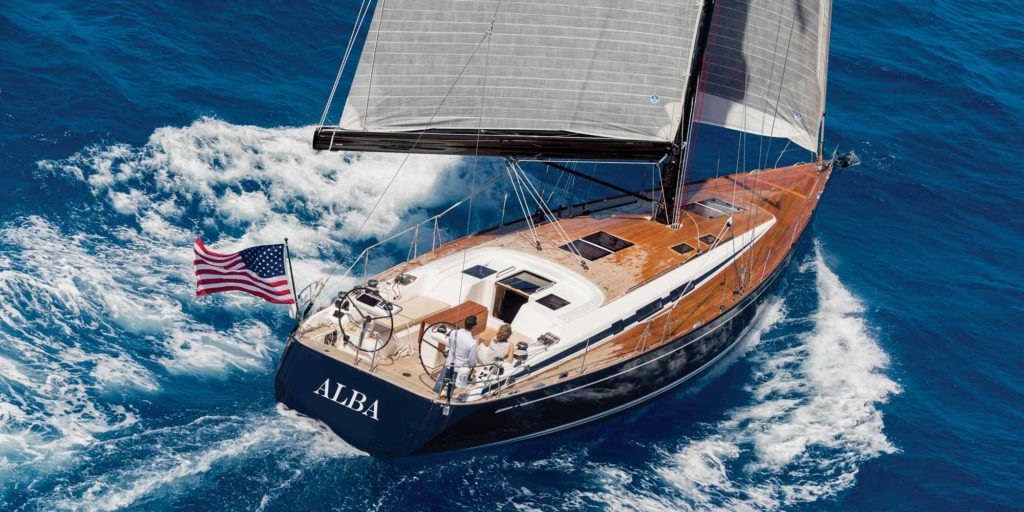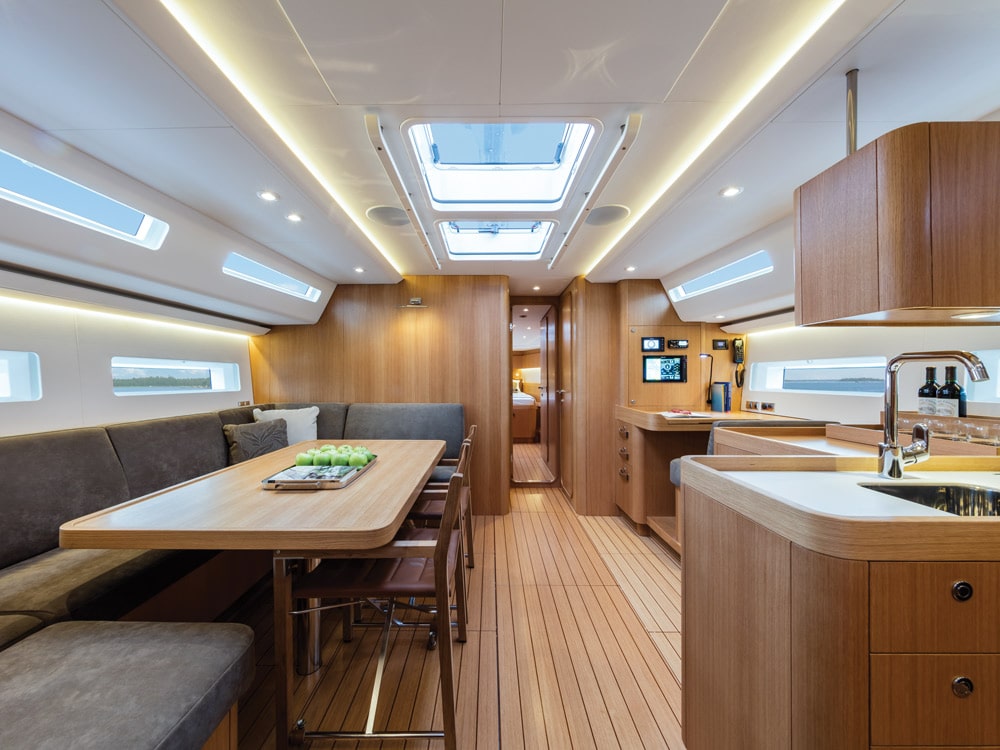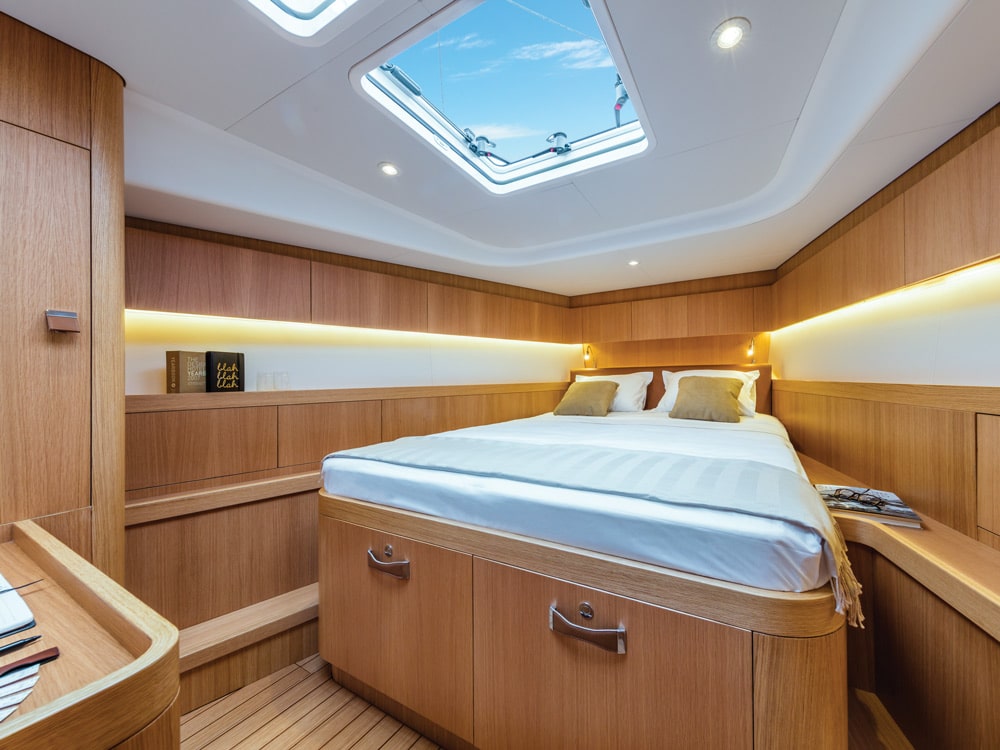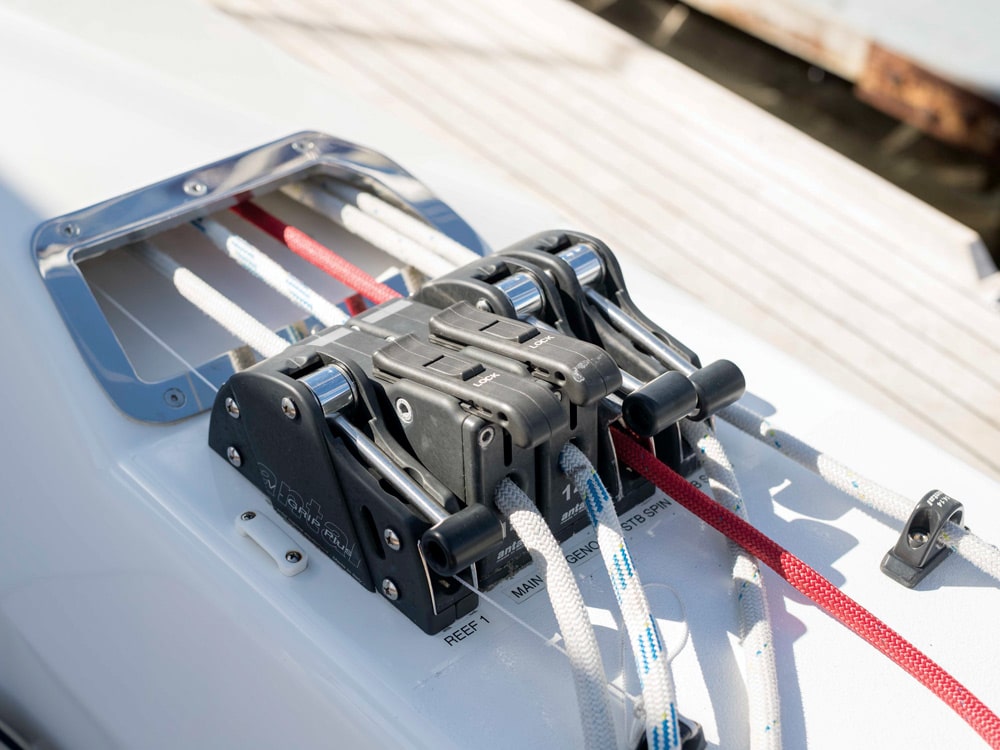
Sparkman & Stephens. Ron Holland. Germán Frers. In the storied history of Nautor’s Swan, one of the world’s most established and respected brands of production cruising boats, with the exception of several race boats in the Club Swan line, the company has employed the services of precisely three naval architects, legends all. Since the 1980s, though, the principal designer has been Frers, and during that time, the company has perhaps become best known for its line of “maxi” yachts, ranging from a relatively modest 60-footer to the whopping Swan 132.
And I thought my first memorable Swan experience, decades ago, on the very cool S&S-designed 44, was one sweet ride.
With the launching last year of the new Swan 54, however, both the builder and the creator have returned to their roots (Frers’ first Swan, in 1981, was the 51). However, if you’re looking for an example of how designs have evolved over the past few decades, consider the initial, very different, appearances of the 51 and the 54.
Nowhere is this more apparent than in the deck layout. The 51 was a veritable winch farm (there were at least a dozen of them, scattered hither and yon from the mast to the wheel); the 54’s spanking clean decks are completely uncluttered (there are but four electric winches, gracing the cockpit coaming, and even the running rigging is stashed in conduits beneath the deck). As with many big early Swans, on the 51, there’s not one dedicated cockpit but two, one for the sail handlers (and the companionway) and the other for the driver. The 54 has but a single expansive one. And of course, the 54 has twin wheels, a ubiquitous feature on today’s contemporary cruisers, and an unimaginable one in the early 1980s.
Yet it’s in the ends of the new boat that we see the greatest changes and innovations, and they’re striking. Forward, the self-launching anchor is beyond nifty, and coupled with the gargantuan sail locker, that’s one interesting bow. Aft, the boarding platform created when the wide, electrically controlled transom is lowered is nothing less than a sweet private sun deck (take that, pinched sterns of yore!). Both of these features are superbly executed.

Actually, the same could be said of the entire vessel. Like every bulletproof yacht ever constructed in the rugged Finnish town of Pietarsaari, the 54 is built like a veritable brick outhouse. Closed-cell foam is employed throughout the cored, vinylester-sandwich layup: in the hull, the structural bulkheads and the teak deck. Watertight bulkheads separate the lazarette and forepeak from the central interior space. Our test boat was equipped with the fixed deep (8 feet 1 inch), standard lead keel and a single rudder, though a “variable draft” daggerboard version with twin rudders is also available for those seeking more range, in skinnier waters, from their prospective cruising grounds (it draws 4 feet 6 inches with the board down).
The oak interior is handsome and well finished. There are three sleeping cabins: the master stateroom all the way forward, with an expansive island berth; a guest cabin just forward of the beam, to port, which may offer the coziest sea berths on passage; and another cabin to port, aft of the companionway, which can be specified as a double or with two single berths. An aft utility cabin to starboard is an ideal space for a workbench, the generator and even a washing machine, though the room could also be set up as a crew cabin, as it was on our test boat. The central dining area is to port; to starboard lies the L-shaped galley, loads of counter space and a forward-facing navigation table. A pair of heads on opposite sides of the boat flanks the forward and aft sides of the central saloon, respectively. All in all, it’s a straightforward but very efficient use of space.

Back topside, there’s a rather ingenious dodger built right into the cockpit coaming, which is easily raised or stashed when needed (you’d want to lose it when club racing, and this would be a grand boat on which to do Caribbean events like the St. Maarten Heineken Regatta and Antigua Sailing Week). The sloop rig features a double-spreader carbon Seldén spar and a split hydraulic backstay; a pair of pad eyes on the bow are set up for the tacks of asymmetric spinnakers. There’s no traveler for the double-ended mainsheet, led to a pair of winches just forward of the helmsman. All other sheets and reefing lines are led below deck to another set of cockpit winches and a suite of attendant control clutches. A handy couple will have no worries taming this steed.

Sadly, on the day we took the 54 for a spin on Chesapeake Bay, we did not have the breeze necessary to put the boat through its proper paces. With a wimpy 3 knots of early morning autumn winds, we managed a couple of gasping knots of boat speed both on and off the zephyrs. It was disappointing because we had no doubt the boat would get up and gallop in any sort of reasonable blow. Under power, we were a bit surprised that the 110 hp Yanmar (on a traditional straight-line shaft — no saildrive) didn’t pack a bit more punch, yielding under 9 knots when opened up. It was the only question mark in my notebook at day’s end.
In other words, I was pretty darn smitten with the Swan 54. It not only joins the legacy of a proud and prosperous enterprise, it more than holds its own.
Herb McCormick is CW’s executive editor.
SWAN 54 Specifications
| LENGTH OVERALL 54’1” | (16.48 m) |
| WATERLINE LENGTH 47’3” | (14.4 m) |
| BEAM 15’7” | (4.29 m) |
| DRAFT 8’1” | (2.4 m) |
| SAIL AREA (100%) | (1,604 sq. ft. (149 sq. m) |
| BALLAST | (18,100 lb. (8,200 kg) |
| DISPLACEMENT | (48,500 lb. (22,000 kg) |
| BALLAST/DISPLACEMENT | (.37 |
| DISPLACEMENT/LENGTH | (205 |
| SAIL AREA/DISPLACEMENT | (18.5 |
| WATER | (177 gal. (670 l) |
| FUEL | (156 gal. (600 l) |
| HOLDING | (31 gal. (120 l) |
| MAST HEIGHT | (78’5” (23.9 m) |
| ENGINE | (Yanmar 110 hp |
| DESIGNER | (Germán Frers |
| PRICE | ($1,300,000 |
Nautor’s Swan USA
401-846-1090
nautorswan.com
Sea Trial
| WIND SPEED | 3 to 4 knots |
| SEA STATE | Calm |
| SAILING | Closehauled 2.9 knots, Reaching 2 knots |
| MOTORING | Cruise (1,600 rpm) 6.5 knots, Fast (2,500 rpm) 8.6 knots |
For a complete guide to Cruising World’s extensive online boat reviews and to request reprints from our older print archives of reviews, go to cruisingworld.com/sailboats/sailboat-reviews.








